How The James Webb Space Telescope Will Deploy (In An Ideal World)
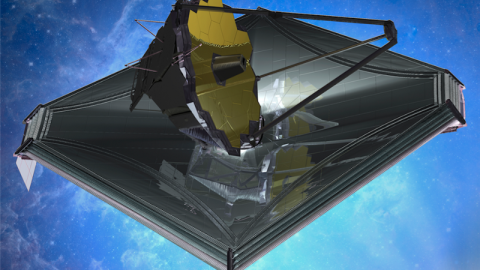
If everything goes right, astronomy will take a magnificent leap into the future. But here’s what needs to happen first.
Back in 2000, NASA held their decadal survey, choosing what would become the James Webb Space Telescope (JWST) as their flagship mission of the 2010s. Despite the initial mismanagement of the project, causing it to go way over budget, the project scientists leading the way learned a slew of valuable lessons from this, and remained on-budget from 2011 up through their planned launch in the spring of 2019. The entire telescope is built, awaiting its final tests, instrument integration, and the last stages of assembly, before it’s loaded onto the Ariane 5 rocket that will take it to its ultimate destination: to the L2 Lagrange point, over 1,000,000 kilometers from Earth. Despite all the challenges it’s faced, it should be 100% ready-to-go when 2019 rolls around. Here’s what we have to look forward to when the time comes.
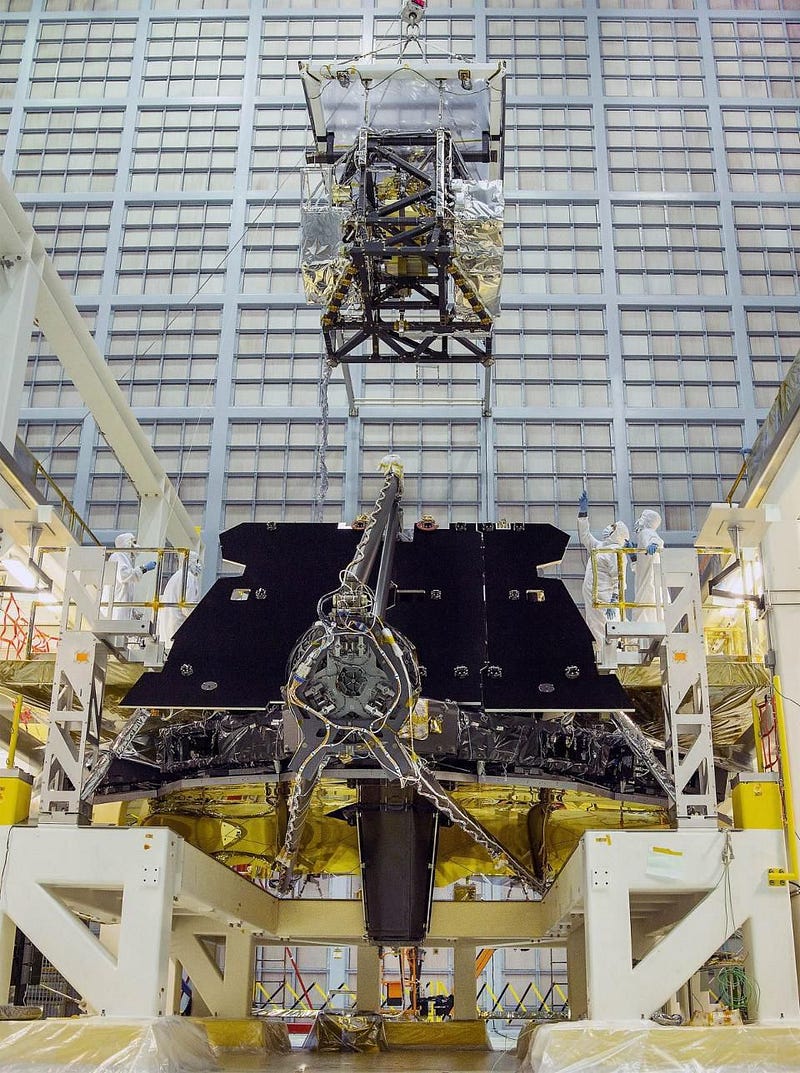
The telescope must be folded, stowed, and placed securely inside the rocket it will launch in. The European Space Agency is providing the rocket: an Ariane 5 launch vehicle. You may be surprised to learn that JWST, despite having seven times the light-gathering power of Hubble, weighs over 10,000 pounds less than Hubble did! At launch, Hubble weighed 25,000 pounds; James Webb will weigh only 14,400. This is due to the requirements of the rocket used: from both a weight and a size perspective, Ariane 5 has limitations more stringent than the space shuttle. As of yesterday, January 25th, the Ariane 5 rocket has had 83 successful launches in a row. But once it’s loaded, the next step is launch.

The only uncertainty in the launch date comes from when the vehicle will be available and ready to go, in launch condition. We’ll have tested JWST and its components under conditions more extreme than it will face on launch in terms of acoustics, vibration, vacuum, and temperature extremes. Upon launch, the assembled but stowed telescope must survive a number of conditions that it’s not possible to test on Earth, such as going from atmospheric pressure to the vacuum of space in a zero-gravity environment. You can plan and prototype and test all you want, but when it comes to the real deal, you only get one shot at the mission. Surviving launch and ascent into space is mandatory.
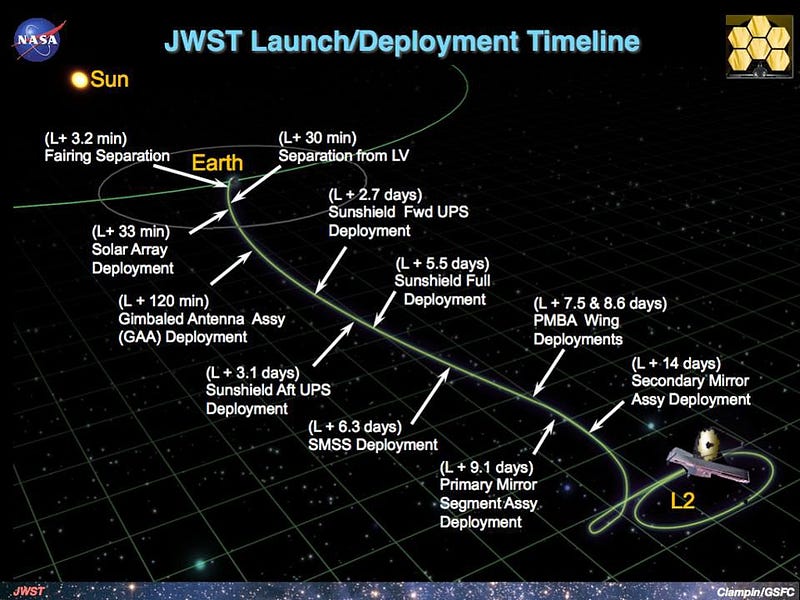
But this is something all launched observatories must deal with. Once the launch vehicle reaches a distance of 10,000 kilometers from Earth, just a half hour into its journey, the telescope separates from the upper stage of the rocket. At this point, JWST is free from the launch vehicle, and is now on its own, on its way to its ultimate destination. Two minutes later, the first key, but difficult step must succeed: to deploy its solar array. James Webb has a battery on board, but will only need it until the array is deployed. The thrusters will then fire, pointing the solar panels towards the Sun and orienting the observatory properly for the next step. If the array fails, the battery will last only a few hours. This step, like a great many, is a single-point-of-failure for the entire mission.

Then, the antenna releases, and a mid-course correction (i.e., a “burn”) is applied, setting James Webb onto its ideal trajectory. The high-gain antenna comes out after only two hours, and shortly thereafter, the mid-course correction solidifies where it’s headed and how it’s oriented. After a total of 24 hours, the antenna is then fully deployed, enabling upstream and downstream communications with the observatory. But the entirety of the first three weeks are key to the telescope’s success; the team won’t be out of the woods just yet.
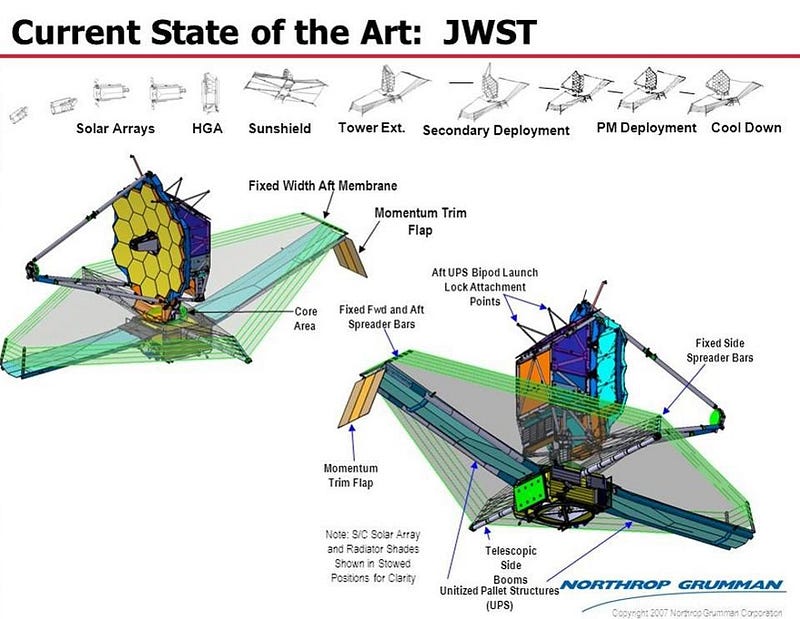
After another mid-course correction, JWST will pass the 400,000 km mark: going farther than any human has ever ventured into space. At this point, three days into the mission, the initial stages of the sunshield will need to come out. Making sure to keep the “cold” part of the spacecraft out of direct sunlight, first the forward sunshield pallet comes down, a slow process taking hours. Then the spacecraft slowly tips to make it safe for the aft sunshield pallet to lower, a process taking a total of 12 hours. There’s no sunshield out yet; these are merely the support structures that will be used to help the entire telescope enter service. At this stage, the last of the sub-system launch locks are released.

Then, it’s time for the next big step: deploying the telescope itself. Nearly 5 days into the mission, the deployable tower assembly extends, raising up the main part of the optical assembly by about two meters. With this raised, the sunshield can begin its full deployment, but only after the right preparation work is done. The membrane cover release is that prep work: protecting the sunshield from any chance it has of snagging against the pallets or the spacecraft bus. First the aft membrane cover is released, then the forward membrane cover, then the core cover. Finally, after the covers are in place, the mid-boom deployments come out of both sides, first one and then the other, which extends all five layers of the sunshield out to their full length. A total of 178 releases must accurately fire; if one of them fails, the telescope fails.
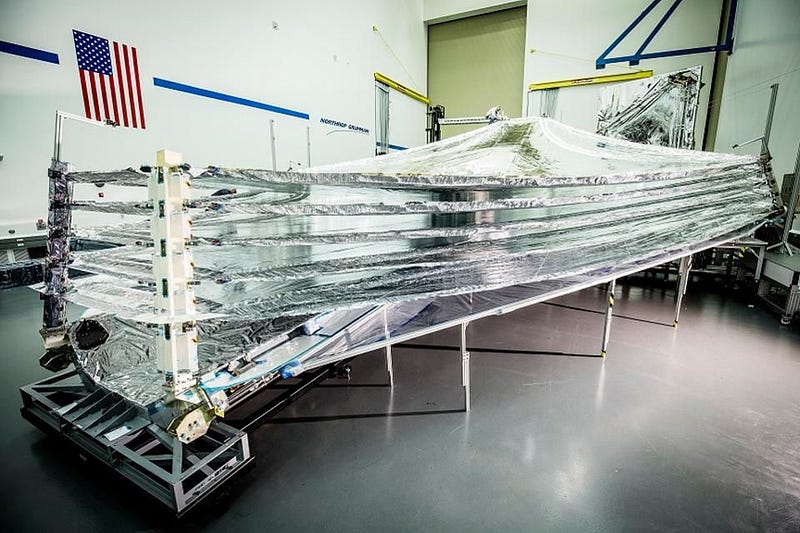
Next, it’s time to get the sunshield into its final position. The sunshield rim is deployed, followed by an excruciatingly slow (and careful) tensioning of the five membranes, which will be at last used to passively cool the optical side of the telescope. As the five layers separate, it looks very dangerous, as a single tear or snag might appear to jeopardize the entire mission. But there are over 100 fasteners used in the folding and stowing of the sunshield; there are spacers placed atop the sunshield pallets to prevent snags, and there are ripstops engineered into each of the membranes. The tensioning should be the final step to set up the sunshield. If it works, the telescope will passively cool itself to sub-liquid-nitrogen temperatures.
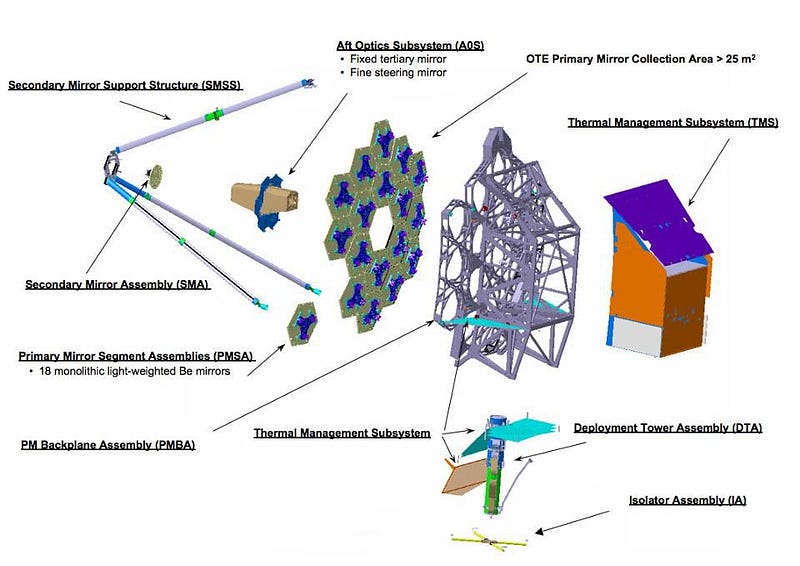
Additional flaps and shades are then routinely deployed, and a few days of passive cooling occur. Then, beginning in the middle of the second week, some very big steps are scheduled to occur. First, the cryocooler activates. Second, the secondary mirror is deployed, enabling James Webb to focus its light from its primary mirror. Third, the aft radiator is deployed, which helps keep the telescope cool and radiate its thermal energy back into space and away from the telescope. Finally, the left and right wings, respectively, of the primary mirror are deployed. Once they’re in place, the hardest part, assuming there are no snags, is complete.
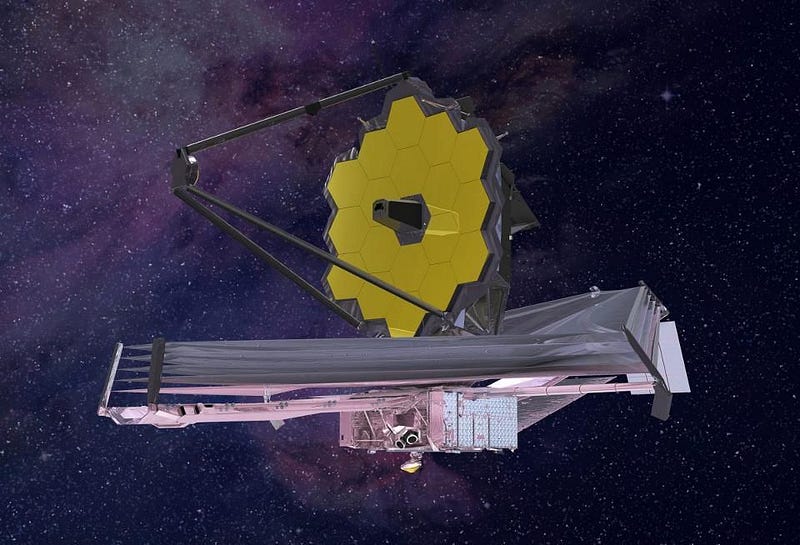
After the first 29 days are behind us, JWST will now be 1,400,000 kilometers from Earth: almost at its destination of the L2 lagrange point. This point is special: it’s the only point beyond Earth’s orbit where a spacecraft can orbit and remain in the same annual period that it takes our planet to go around the Sun. A second mid-course correction then happens, placing James Webb into its ultimate orbit: quasi-stably moving around the L2 point. Additional burns may be necessary to adjust the telescope position, orientation, and orbital parameters, but there’s more than a three month cushion to nail down all of those details. At the same time, instruments and the primary mirror will begin calibration and alignment.
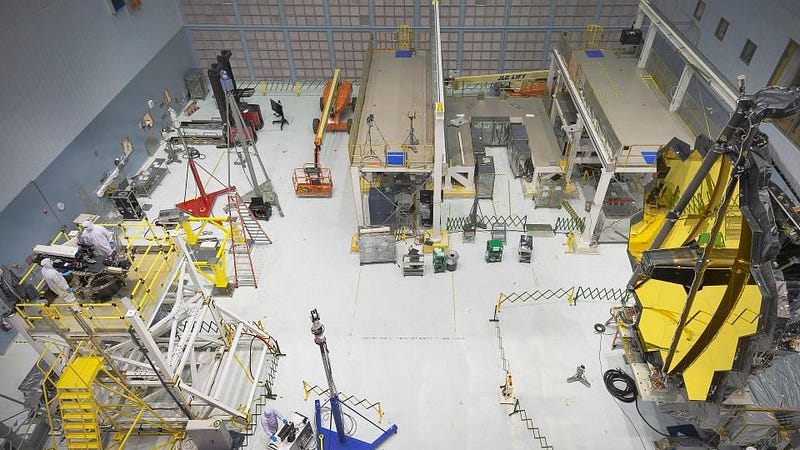
Once four months have passed, we’re ready for the final pre-science stage. While cooled and in orbit, the last two months will be about aligning, testing, and integrating the components, instruments, and optics from afar. Every one of the instruments must be properly calibrated before we’re good to go. NIRcam will be the only one ready before the fourth month comes upon us, but the other three, NIRspec, the fine-guidance sensor, and MIRI, must be optimized. Once the NIRcam is complete, the telescope will see what astronomers call “first light,” where it will take its first science data, return its first image, and, after processing, release it to the world.
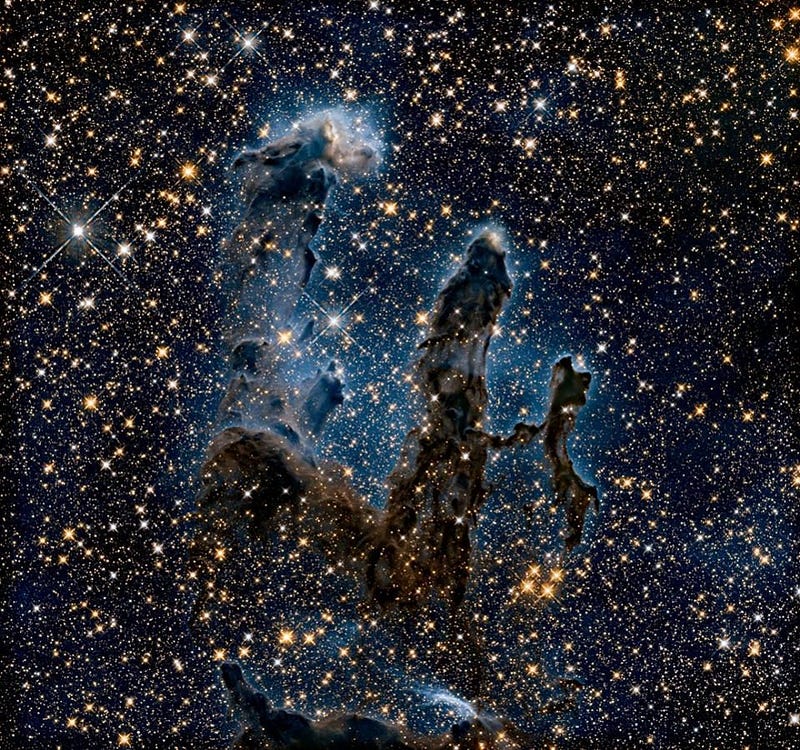
After six months, science begins. It’s an incredible path to get there, one that’s been meticulously planned for by a large slew of teams working together as part of an enormous collaboration. James Webb will be as much a feat of engineering and teamwork as it is of science and technology, from mission control to operations to the people and companies that built, manufactured, and installed the systems and subsystems. The moment of truth won’t be one single moment, but a series of small victories taking months to verify. When they’re all complete, we’ll have a telescope unlike any other.
https://www.youtube.com/watch?v=bTxLAGchWnA
If the Hubble Space Telescope showed us what the Universe looked like, James Webb will show us how the Universe grew up. It will show us how stars formed, how galaxies came to be, what the earliest structures looked like, and where and how planets are actively forming right now. It will allow us to directly image Jupiter-like objects, and detect molecules in interstellar space. It can find biosignatures as far away as the galactic center. It will teach us whether the most common Earth-sized planets, the ones around red dwarf stars, have atmospheres. It will find earlier galaxies and star clusters than we’ve ever seen, and should find stars made purely of material untouched since the Big Bang: of pure hydrogen and helium.
But to do that science, we need the telescope to work. Owing to the tremendous work put in by countless individuals, and a plan executed with unprecedented care and precision, we’re barely a year away from the launch of astronomy’s flagship observatory, and an unprecedented scientific leap into the 3rd millennium. The Universe is waiting; it’s up to us to go.
Ethan Siegel is the author of Beyond the Galaxy and Treknology. You can pre-order his third book, currently in development: the Encyclopaedia Cosmologica.





